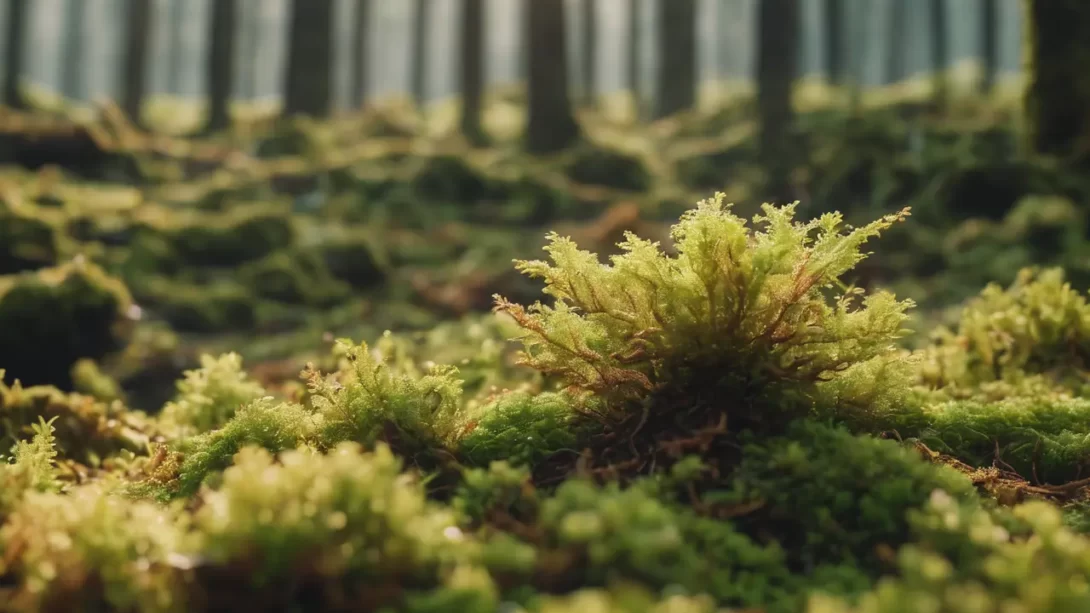Sphagnum moss plays a crucial role in gardening, particularly in creating moisture-rich environments for plants. Its unique ability to retain water and provide a sterile medium makes it a popular choice for orchids, carnivorous plants, and as a soil amendment. This article guides you through the sustainable cultivation of sphagnum moss, ensuring a continuous and environmentally friendly supply for your gardening needs.
Sphagnum Moss
Sphagnum moss is a genus comprising numerous species, each with its specific characteristics and growing requirements. It’s renowned for its high water retention capacity, often absorbing up to twenty times its dry weight in water. Understanding the particular needs of the sphagnum moss species you choose to grow is vital for success. These mosses thrive in acidic, nutrient-poor environments, differing from other moss types in both appearance and habitat preference.
Choosing the Right Environment
The key to successful sphagnum moss cultivation lies in replicating its natural habitat. Sphagnum moss generally prefers cool, damp, and acidic conditions, often found in bogs and wetlands. For gardeners, this means either selecting a suitable outdoor spot or creating an appropriate indoor environment. Outdoor cultivation is ideal in temperate regions with consistent moisture, whereas indoor cultivation allows for more controlled conditions, suitable for climates where outdoor cultivation might be challenging.
Preparing the Growing Area
The foundation of a successful sphagnum moss garden is the right substrate and conditions. For outdoor cultivation, select a shaded area with acidic soil. If the natural soil isn’t suitable, consider creating a raised bed filled with a mixture of peat and sand to mimic the moss’s native boggy habitat. Ensure the area has good water retention yet allows for excess water to drain away, preventing waterlogging.
For indoor cultivation, use shallow trays or containers with a similar peat-sand mixture. The depth of the container should be sufficient to hold moisture while allowing excess water to drain. Place these containers in a location where they can receive indirect sunlight and maintain a consistent level of moisture.
Planting the Moss
You can start growing sphagnum moss from live plants or fragments. These can be obtained from a garden center or a sustainable source. When planting, gently press the moss into the substrate without burying it completely. The moss should sit on the surface, allowing it to spread and grow outward. Space out the pieces to give them room to expand and cover the area gradually.
Watering and Humidity Requirements
Sphagnum moss requires constant moisture to thrive. Water the moss regularly, keeping the substrate consistently damp but not waterlogged. If you’re growing moss indoors, you may need to increase the ambient humidity around the plants. This can be achieved with a humidity tray or a regular misting routine. Avoid using tap water if it is hard or chlorinated, as sphagnum prefers soft, acidic water. Rainwater or distilled water is ideal for maintaining the right conditions.
Light and Temperature Conditions
Sphagnum moss does not require direct sunlight and actually thrives best in diffused or indirect light. Too much direct sun can dry out the moss and inhibit its growth. Aim for a location that receives bright but filtered light. As for temperature, sphagnum moss prefers cooler conditions, typically thriving in temperatures ranging from 50°F to 70°F (10°C to 21°C). Avoid placing the moss in areas that experience extreme temperature fluctuations.
Maintenance and Propagation
Regular maintenance of sphagnum moss involves monitoring its moisture level and removing any weeds or debris. To propagate sphagnum moss, simply divide it into smaller pieces and spread these fragments over a new area of prepared substrate. The moss will naturally begin to grow and fill in the space. This vegetative propagation method is simple and effective, allowing you to expand your moss garden or share it with fellow gardeners.
Troubleshooting Common Problems
Common issues with sphagnum moss include drying out, overwatering leading to rot, and pest infestations. Ensure consistent moisture without overwatering, and if you notice any signs of rot, reduce watering and improve drainage. Pests can be managed through natural means, such as introducing beneficial insects or using organic pest control methods.
Conclusion
Growing sphagnum moss can be a gratifying experience, particularly when done sustainably. By replicating its natural habitat, providing consistent moisture and indirect light, and maintaining the right temperature, you can successfully cultivate sphagnum moss. This unique plant not only enhances the biodiversity of your garden but also provides an invaluable resource for various gardening projects. Embrace the journey of growing sphagnum moss and enjoy the lush, verdant results of your efforts.



